Things You'll Need
Organic mulch
24-8-16 fertilizer
Spade
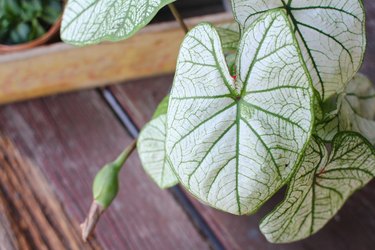
Providing ornamental foliage and edible stems and tubers, taro (Colocasia esculenta) is a versatile, frost-tender perennial. In U.S. Department of Agriculture plant hardiness zones 8 through 10, it grows outdoors year-round, but in colder zones it grows only as an annual. Also called elephant ear, dasheen and eddo, taro grows 3 to 6 feet tall and wide and thrives in water gardens. In favorable conditions, taro is invasive, and all plant parts are toxic when eaten raw. Its large, tall leaves suit tropical gardens, and taro grows well in large containers.
Step 1
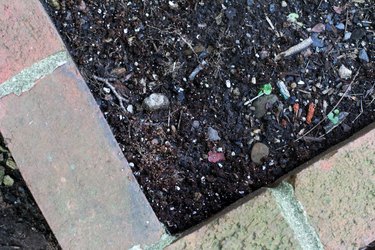
Grow taro in moist, rich soil in sheltered, partial-shade or filtered-sun sites. Space plants 2 feet apart in rows 4 feet apart.
Video of the Day
Step 2
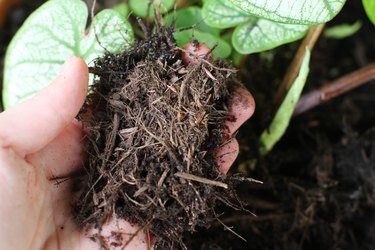
Water taro regularly so that the soil never dries out and is constantly moist. Spread a 2-inch layer of compost, well-rotted manure or other organic mulch around taro plants to conserve soil moisture.
Step 3
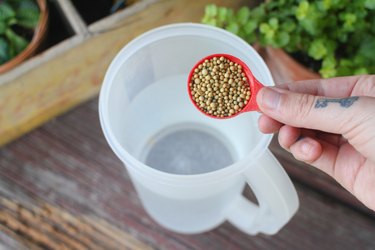
Feed taro with a 24-8-16 fertilizer diluted at a rate of 1 tablespoon per gallon of water. Apply 1 gallon per 10 square feet of taro plants every two weeks or dilute and apply the fertilizer according to the manufacturer's instructions.
Step 4
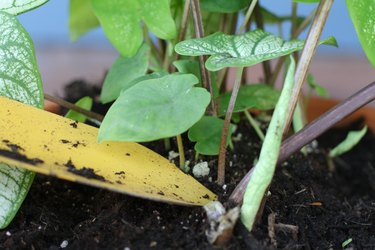
Dig up taro shoots that appear outside the desired growing area with a spade in late summer. Alternatively, dig up entire taro plants in fall to harvest the edible tubers.
Tip
Taro tolerates growing in water up to 6 inches deep and suffers from few pests or diseases.
Taro requires seven months of frost-free weather to produce tubers. Cut plants back to 3 inches above the ground and dig up taro tubers in fall after the first frost and store them in dry peat or wood shavings in a cool, dry spot where the temperature fall below 45 degrees Fahrenheit. Alternatively, leave tubers in the ground in warm climates, where they store well until they sprout in spring.
Sterilize pruning tools by wiping the blades with alcohol before pruning to keep plants disease-free.
Use a 5-gallon pot to grow Taro in containers. Use a rich potting medium and water regularly to keep the soil moist. Bring containers into a bright sheltered location when temperatures dip to freezing.
Taro's yellowish-white, calla lily-like flowers rarely appear and are often hidden by foliage when they are produced.
Warning
Don't grow taro in areas easily accessible to children and pets. All parts of taro plants are toxic when eaten raw, causing burning and swelling in lips, mouth, tongue and throat. People suffering from poisoning can experience difficulty speaking.
Video of the Day
- Missouri Botanical Garden: Colocasia Esculenta
- University of Florida IFAS Extension: Dasheen -- Colocasia Esculenta
- North Carolina Cooperative Extension: Colocasia Esculenta
- Iowa State University Extension and Outreach: Growing Elephant Ear
- University of Missouri Extension: Gardening With Tropical Bulbs -- Allocasia and Colocasia